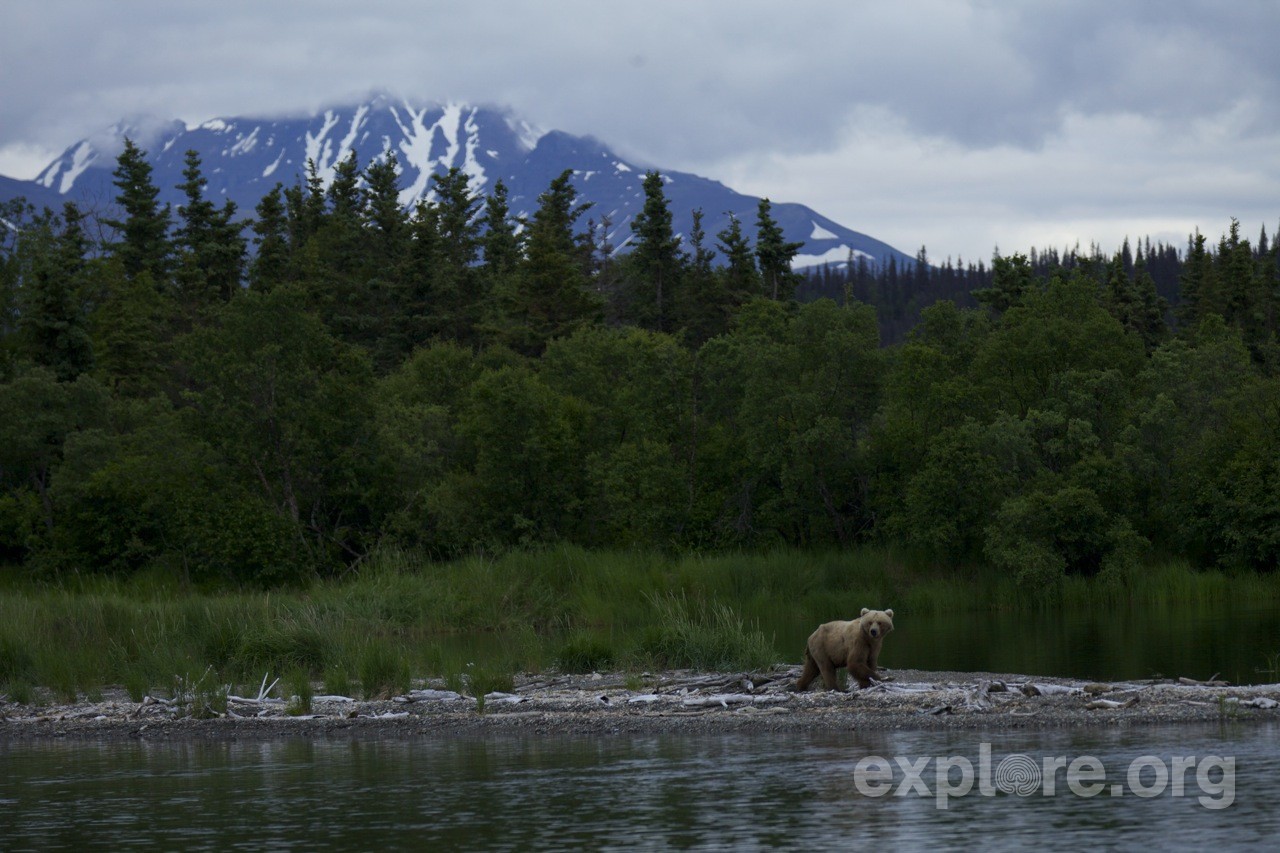17 Things to Know: Katmai National Park and its Brown Bears
Katmai National Park is home to our Brown Bear Live Cams (now in sneak peek preview – click here!). Media Ranger Mike Fitz offers us “17 Things to Know” about the bears of Katmai while gearing up for this season!
- Katmai National Monument was established in 1918 to protect a volcanically devastated region surrounding Mount Katmai and the Valley of Ten Thousand Smokes.
- Today, Katmai remains an active volcanic landscape, but it also contains 9,000 years of human history as well as important habitat for salmon and the thousands of brown bears that feed on them.
- Katmai National Park and Preserve has 60-70 employees, volunteers, and interns during the summer.
- Around 30 of those employees work at Brooks Camp during the summer.
- Hunting is prohibited within Katmai National Park. Hunting is allowed with Katmai National Preserve and other areas outside of the national park boundaries.
- Biologists estimate that about 2,200 bears inhabit Katmai National Park.
- Katmai’s bears were likely less abundant early in the 20th century, although there are no population estimates from this time period. Smaller salmon runs, competition with humans, and the 1912 Novarupta-Katmai eruption helped to suppress the population.
- The area near Brooks Falls is dominated by bears, but many other mammals use the area; Minks, otters, beavers, wolves, and moose can sometimes be seen.
- Brooks Falls is the first place in the region where bears can successfully fish for salmon.
- Sockeye salmon are the most abundant species of salmon in the Brooks River – – 200,000 to 400,000 salmon may jump Brooks Falls each year!
- 60-100 different bears may be seen using the Brooks River during July and September. At these times fish are most accessible to bears.
- Bears are most abundant at Brooks Falls when sockeye salmon are migrating in July.
- Katmai’s bears emerge from their dens March-May.
- The bears usually continue to lose weight through the spring until salmon arrive. The abundance of bears in Katmai is dependent on large runs of salmon.
- Bears can eat dozens of salmon per day and most of a bears annual intake of calories comes from salmon.
- In July the bears feed on energetic migrating salmon fresh from the sea. In September and October, bears fish for dead and dying salmon in the lower stretches of the Brooks River. In early to mid fall, bears enter a physiological phase called hyperphagia, which basically means excessive eating. At this time they are focused on gaining as much weight before they enter their dens for the winter.
- Bears in Katmai enter their dens in October and November. Adult males usually enter their dens later than females and younger bears.
We’re just warming up on the #bearcam here, where mother bears and cubs are emerging from their dens and can be spotted along the river!
To find out more, check out the frequently asked questions Ranger Mike Fitz wrote for #bearcam watchers here.
For information about donations, go to http://www.nps.gov/katm/supportyourpark/index.htm.




That is great post. I like many of those,,but #14 explain much to me when watching on cam The more I learn, the more I love bears Thank you